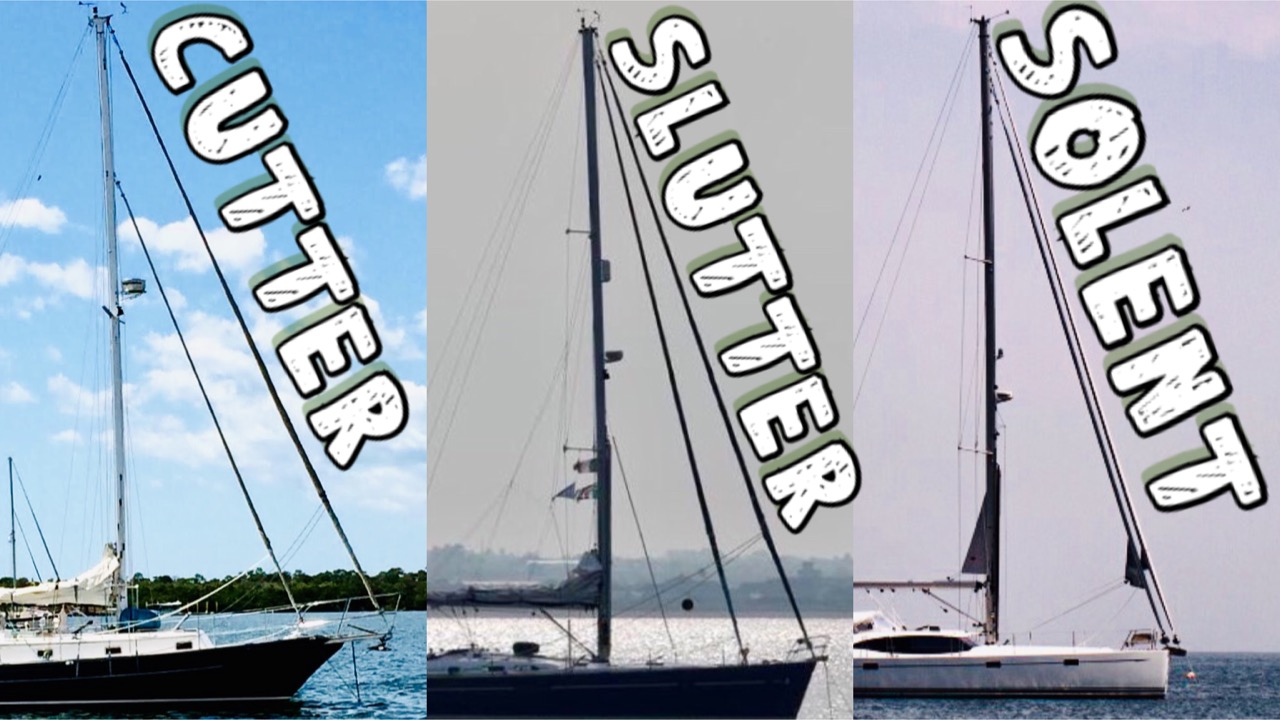There are actually three different types. Cutter, Slutter, and Solent.
A cutter has the mast set aft of 40% line of the boat, meaning that 40% of the boat is bow and 60% is stern. Since the mast is farther aft, there is more space for headsails and that means that you can easily fit two different headsails on the bow and fly them at the same time.
If the mast is forward of the 40% line, the boat is a Sloop, but a sloop only has one headsail. When you add a second headsail, the boat becomes either a Slutter if the inner headsail is set on the deck like a Cutter, but runs all the way up to the masthead. A Solent has the inner headsail set just aft of the headsail, making it a sloop with two different headsail options.
Slutters and Solents don’t work well at flying both headsails at the same time like a cutter can, except when Sailing dead down wind with the headsails set wing on wing.
Why you might be wondering why the inner sail leads to the top of the mast on both of these sloop combinations? Well, there are two reasons: 1. The space for the inner sail is so small that if it doesn’t lead to the masthead, it would be too small to have any effect. Leading it to the masthead gives it the extra sail area that makes that sail effective.
The second reason: 2. by leading the sail to the masthead, the counter loads are supported by the backstay meaning they don’t need to rig additional running backstays.
These are the different options available to sailboat that wants to have two headsails. Either already be a cutter or be a sloop with a Slutter or a Solent rig.






